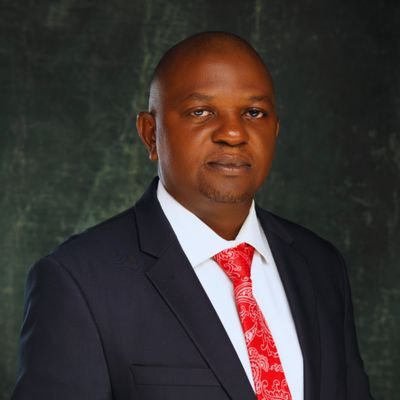Many victims of the 2024 flooding across the country say they are still stranded as they are yet to receive support from the federal and state governments.
This is just as the federal government said yesterday that 30 states and the Federal Capital Territory (FCT) are at high risk of flooding this year.
Floods hit many states last year with many lives lost, and properties and farmlands destroyed.
The collapse of the Alau Dam in Borno State on September 10, 2024, reportedly left at least 150 persons dead, hundreds displaced, and farmlands and other property destroyed, particularly in Maiduguri and Jere Local Government Areas.
Massive flooding was also recorded in Benue, Jigawa, Bayelsa, Kebbi and Kogi States last year.
‘Borno, Jigawa, Adamawa, Zamfara 26 others at risk this year’
The Minister of Water Resources and Sanitation, Prof. Joseph Utsev, yesterday listed Abia, Adamawa, Akwa Ibom, Anambra, Bauchi, Bayelsa, Benue, Borno, Cross-River, Delta, Ebonyi, Edo, Gombe, Imo, Jigawa, Kebbi, Kogi, Kwara, Lagos, Nasarawa, Niger, Ogun, Ondo, Osun, Oyo, Rivers, Sokoto, Taraba, Yobe, Zamfara and the FCT as high risk states.
He spoke in Abuja, during the unveiling of the 2025 Annual Flood Outlook by the Nigeria Hydrological Services Agency (NIHSA) to the public.
He said, “1,249 communities in 176 local government areas (LGAs) in 30 states and FCT fall within the high flood risk areas, while 2,187 communities in 293 LGAs in 36 states of the federation and the FCT fall within the moderate flood risk areas.
“The flood level in this category is expected to be high in terms of impact on the population, agriculture, livelihoods, livestock and infrastructure, and the environment.
“This year, 666 communities in 52 LGAs in 14 states fall within the high flood risk areas in the months of April, May and June; while 549 communities in 114 LGAs in 30 states in the months of July, August and September; and 489 communities in 56 LGAs in 13 states in the months of October and November, 2025 are within the high flood risk zones.
“The details of the LGAs and their corresponding states are contained in the AFO publication.”
States to experience moderate flooding
The minister also disclosed that the moderate impact level floods are expected in 445 communities in 116 LGAs in 24 states within the months of April, May and June.
He added that 1,458 communities in 271 LGAs in 33 states would also face moderate flooding within the months of July, August and September; while 1,473 communities in 171 LGAs in 26 states within the months of October and November, 2025 will equally face moderate flooding.
‘Why there’ll be flooding in major cities’
He said flash and urban flooding were projected in major cities in the country due to high rainfall intensities, low attention to management of water facilities, including drainage systems, waterways and lack of flood resilience structures.
He said, “Cities such as Abakaliki, Abeokuta, Abuja, Asaba, Benin City, Birnin–Kebbi, Calabar, Ibadan, Kaduna, Kano, Lagos, Makurdi, Nguru, Onitsha, Oshogbo, Port Harcourt, Sokoto, Warri and Yola, among others are to experience these categories of flood incidence.”
Lagos, Delta, others face coastal flooding
Utsev also said Bayelsa, Cross River, Delta, Lagos, Ogun, Rivers and Ondo States are to experience coastal flooding due to rise in sea level and tidal surge.
He said this would impact fishing, wildlife habitation and river navigation.
FG’s initiatives to address flood risk
Speaking on initial measures to address the challenges, the minister said the 2025 Annual Flood Outlook (AFO) had been segmented into three parts to address the pressing challenges of flood disasters and provide detailed information for mitigation, particularly in the most vulnerable communities.
He listed the three initiatives as including flood forecast which gives an overview of the 2025 flood scenarios; flood risk communication, which exposes the necessary communication modes for translating flood occurrence into action; flood mitigation and adaptation, which summarises the required activities, measures and programmes.
He said the forecasting approach ensures that at-risk communities, local governments, and disaster risk managers receive timely, precise and actionable flood risk information and prepares safety measures ahead of time.
He also announced the rollout of several pioneering projects, including national flood insurance programme (NFIP) which, he said, was first-of-its-kind initiative offering insurance protection to vulnerable households, farmlands and livestock, beginning with pilot schemes in Kogi and Jigawa states.
He said another programme, the integrated climate resilience innovation project (I-CRIP), developed in partnership with key ministries, I-CRIP, aims to improve food security, energy production, and water resource use through climate-smart strategies.
The minister announced the Niger flood project which, he noted, is a transformative flood control and river management effort from Lokoja to Bayelsa, targeting improved navigation, irrigation, hydropower and eco-tourism.
He said the annual drought outlook would be unveiled later this year, forecasting drought patterns and promoting holistic water resource planning.
Stakeholders charged on early response
In his remarks, the permanent secretary in the Federal Ministry of Water Resources and Sanitation, Richard Pheelangwah, urged stakeholders to prioritise early response.
“This outlook is not just about numbers, it’s about protecting lives and livelihoods,” he said.
By Saawua Terzungwe (Abuja), Hope Abah (Makurdi), Bassey Willie (Yenagoa), Ismail Adebayo (Birnin Kebbi), Hamisu Kabir Matazu (Maiduguri) & Haruna Gimba Yaya (Gombe)










